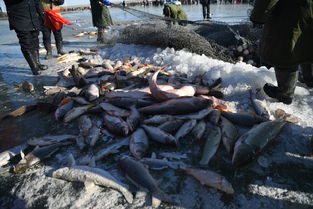Introduction:
For the avid angler who enjoys spending their days on the water, mastering the art of baiting is crucial to ensuring a productive and enjoyable fishing experience. Whether you're targeting freshwater or saltwater species, knowing how to effectively set up your bait is the key to attracting fish and reeling in a catch. In this article, we will delve into the essential techniques for setting up your baiting stations, from selecting the right bait to employing effective strategies for different fishing environments.
Understanding Baiting:
Before we dive into the specifics of baiting techniques, it's important to understand the concept of baiting itself. Baiting is the process of placing food or lure in a specific area to attract fish. This can be done using natural bait, artificial lures, or a combination of both. The goal is to create an enticing environment that encourages fish to stay in the area and feed.
Choosing the Right Bait:
The first step in successful baiting is selecting the right bait. Here are some factors to consider:
- Target Species: Different fish species are attracted to different types of bait. Research the species you're targeting and choose bait that they are known to prefer.
- Availability: Consider the availability of bait in your area. Some baits, like live bait, may require more effort to obtain.
- Condition: Ensure that your bait is fresh and in good condition. Dead or decaying bait can repel fish rather than attract them.
The Right Baiting Technique:
Once you've chosen your bait, it's time to consider the baiting technique. Here are some common methods:
- Drop Baiting: This involves dropping bait directly into the water to attract fish. It's suitable for still waters or areas with minimal current.
- Cast Baiting: Cast your bait out into the water and let it sink to the desired depth. This method is effective in areas with current or for targeting fish that are deeper in the water column.
- Float Baiting: Use a float to keep your bait at a specific depth or to drift with the current. This is ideal for targeting fish that are feeding on the surface or in the top layers of the water.
Setting Up Your Baiting Station:
The next step is to set up your baiting station. Here's how to do it:

- Choose the Right Location: Find a spot that is known to be productive for the species you're targeting. Consider factors like structure, depth, and vegetation.
- Mark Your Spot: Use a marker or buoy to mark your baiting station so you can return to it easily.
- Disperse Your Bait: Spread your bait evenly around your marked spot to create an attractive feeding area for fish.
Using Artificial Lures:
If you prefer using artificial lures, here are some tips:
- Select the Right Lure: Choose a lure that mimics the movement and appearance of the natural prey of the fish you're targeting.
- Vary Your Presentation: Experiment with different retrieve techniques to see what works best in your fishing environment.
- Maintain Patience: Fish may take time to respond to artificial lures, so be patient and give them a chance to bite.
Maintaining Your Baiting Station:
To ensure a successful fishing experience, it's important to maintain your baiting station:
- Regularly Check Your Bait: Ensure that your bait is still fresh and in good condition.
- Adjust Your Strategy: If you're not getting bites, try changing your bait or technique.
- Respect the Environment: Be mindful of the impact your baiting has on the environment and avoid overfishing.
Conclusion:
Mastering the art of baiting is a skill that can greatly enhance your fishing experience. By choosing the right bait, employing effective baiting techniques, and maintaining your baiting station, you can increase your chances of catching fish and enjoy a successful day on the water. Whether you're a seasoned angler or a beginner, these essential techniques will help you become a more proficient fisherman and make the most of your time on the water. Happy fishing!












